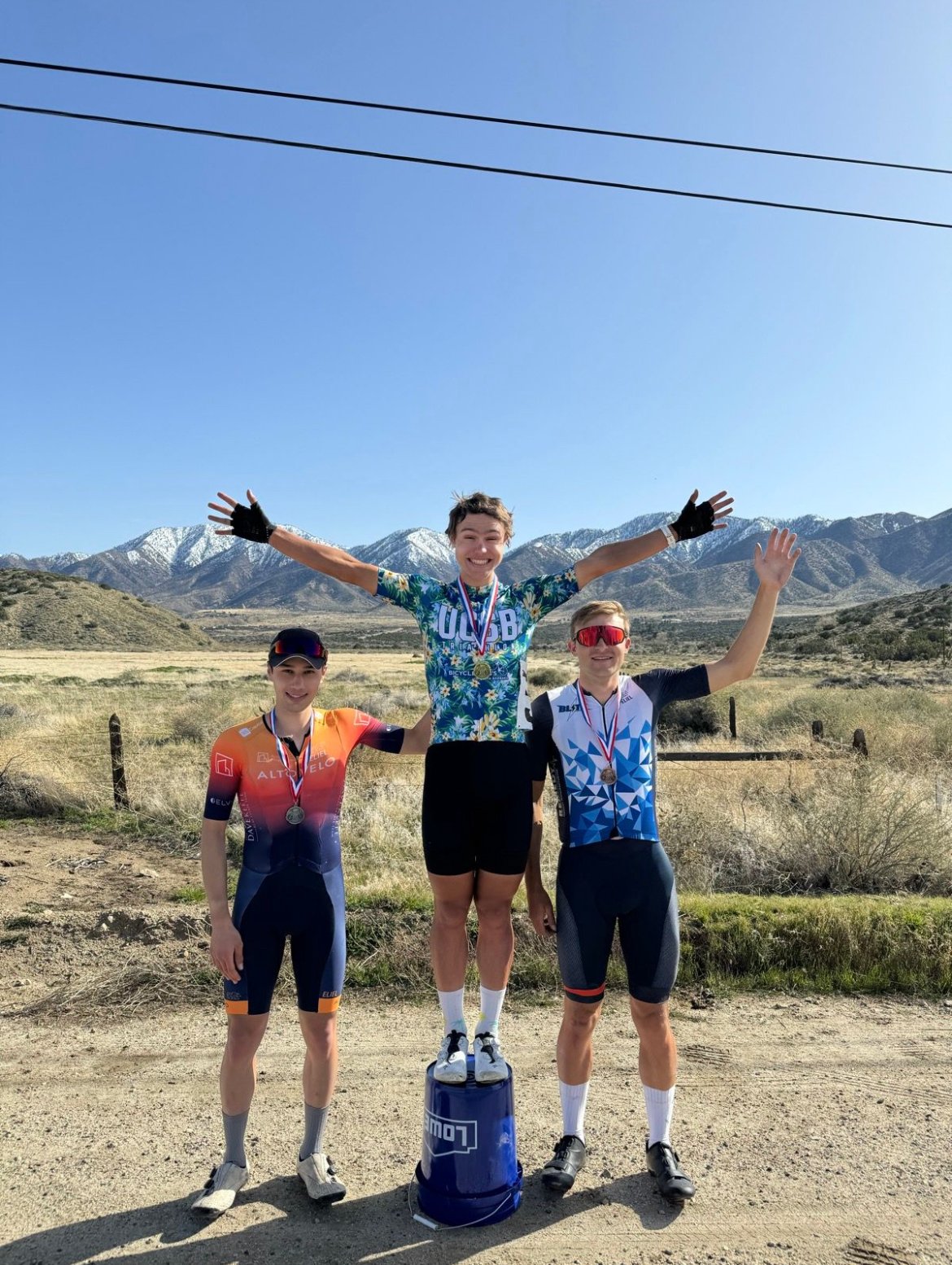Race Report: 2024 UCLA Devil’s Punchbowl Road Race - Men's Cat 4 / Collegiate C
Race: UCLA Devil’s Punchbowl Road Race - Men's Cat 4 / Collegiate C
Date: March 9, 2024
AVRT racers: Henry Mallon
Top Result: Henry 2/35 overall (1/17 Cat 4)
Course: Three laps of a 12.5-mile course with 1,500 feet of climbing per lap. The main climb is divided into two segments connected by a 1-mile section of false-flat uphill. The finish line is at the end of the first segment just before the false-flat. The first section is 0.68 miles at 6% and steepens towards the finish line. The second section is 2.6 miles at 6%, starting more gradually and steepening in the final mile. After the climb is a fast 5-mile descent—expect speeds of 40-50 mph without pedaling, and be careful of multiple large potholes on the right side of the lane. Following the descent is a 2-mile section at 1-2%, ending with a right-hand turn onto the first short climb to the finish. Note that this race reaches an elevation of nearly 5,000 feet, which reduces available aerobic power by ~9% if you’re not acclimated.
Strava: https://www.strava.com/activities/10926294648
Nutrition: ~1.5 bottles with 80g of homemade malto/fructose mix and a gel.
Race Recap: Written by Henry. This course profile resembles a larger version of University RR in Santa Cruz, so I anticipated an attritional race culminating in a small group effort up the final short climb. As the only AV rider in this category, my plan was to rely on the larger collegiate teams to make the race hard. Hopefully, I could make the final selection and conserve energy for the decisive climb to the finish.
The race begins on the false-flat section part-way up the main climb. Due to the heat, I decided to stay in the air-conditioned comfort of my car and only do a brief 15-minute warm-up. This was a bad idea, as I wasn’t adequately prepared for the pace at the start. During the initial 11-minute climb, I felt awful and barely clung onto the lead group, which was already reduced to about 10 riders.
Once on the descent, we were quickly spun out and enjoyed 8 minutes of freewheeling and much-needed recovery. Fortunately, everyone was diligently pointing out obstacles, as there were a few giant potholes (all on the right half of the lane) that would be very dangerous at speeds of 40-50 mph. Once we reached the end of the descent, the group had swelled to about 20 and we rode tempo in a paceline for the ~3-mile gradual ascent to the main climb.
As expected, the next time up the climb reduced the group even further. There were no major attacks, but a UCSB rider (Logan Unger) was doing most of the pacesetting. By the summit, we were left with a group of about 5 riders.
The moderate elevation was having a larger impact than I anticipated. I was immediately redlined with any hard surges and threshold power felt like VO2 max. Despite 8+ minutes of freewheeling on the descent, I struggled to fully recover. On the second descent, my average heart rate was 139 bpm and barely fell below 120 bpm by the bottom (for reference, my max HR is ~205 bpm).
Once more, the group roughly doubled in size during the descent and false-flat before the climb. As we crossed the start/finish, Logan Unger from UCSB launched an attack and the group exploded. I was initially chasing solo, but after about 5 minutes Logan was barely visible. Realizing I wouldn’t catch him on the climb, I decided to let up slightly to join the next group of 3 chasers, hoping we could work together on the upcoming descent and flat. This 10-minute section of the climb was close to a maximum effort (195 bpm avg) and the power was probably about 20-30 watts lower than I would expect at sea level.
Once on the descent, another rider caught back on (making us a group of 5) and we worked as well as we could to chase Logan. Unfortunately, none of us had adequate gearing to pedal the descent. On the final 3-mile section before the finishing climb, we continued working hard in a paceline. There was one moment when I saw a rider getting closer and thought we were gaining on Logan. This was not the case. He was out of sight and ended up winning by about 2 minutes.
I didn't fully trust myself in a sprint finish, so I thought my best chance would be to attack at the steepest section ~800 meters from the line. When we got to this point, I launched my attack and no one followed.
On the day, I don’t think there was anything I could have done to beat Logan; he was simply a level above the competition. But, I was still super happy to take second overall and win Cat 4, while also getting my last points to upgrade!
Overall, I learned that I need a proper warm-up (even in the heat) and possibly a larger chainring for courses with fast descents. My biggest gear right now is 50/11, which was insufficient to pedal the downhill. Better gearing would have really helped our small group chase Logan on the final descent. And, there were riders every lap who were distanced on the climb but reconnected on the descent (presumably using a larger gear ratio to their advantage).
Even with the long drive, I would highly recommend this race. The scenery is stunning with snow-capped mountains set against a vast landscape dotted with Joshua trees and cacti. The challenging climbs, high elevation, and intense heat make this course absolutely brutal. And, I think the tactics resemble a larger-scale version of UCSC’s University RR.


